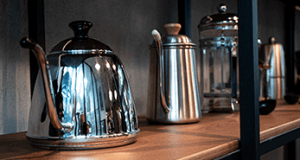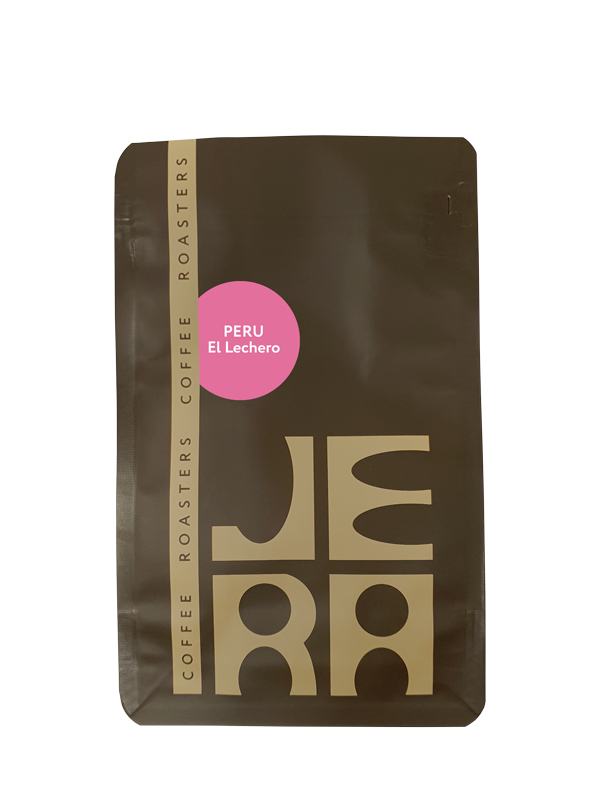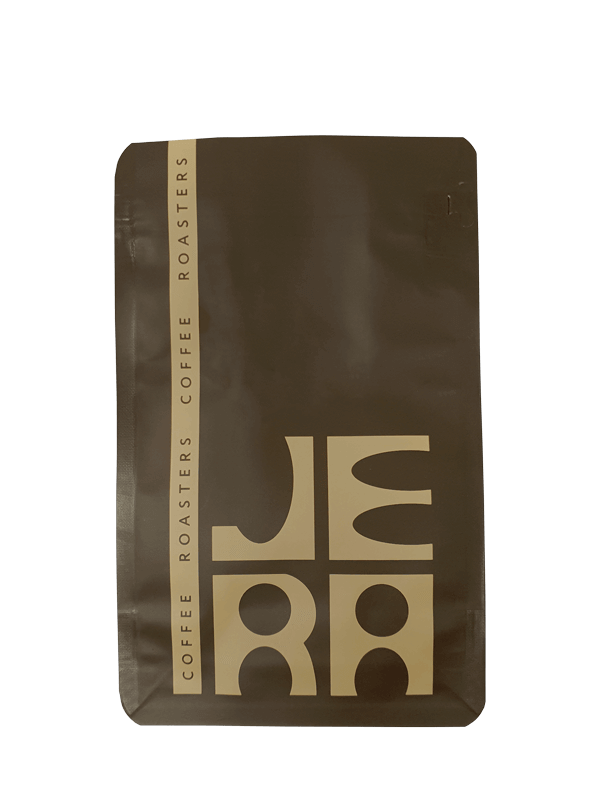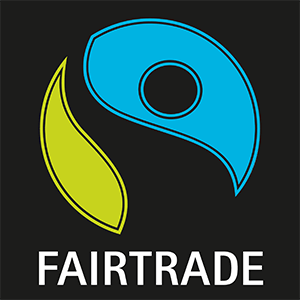קפה פרו | San Ignacio, Finca El Lechero
קפה ייחודי מפרו
קפה עם גוף בינוני ועגול, מרירות יחסית נמוכה, מתיקות גבוהה וחמיצות עסיסית של פרי שדה. ארומה של חליטת ורד בר, פרחוני ופרותי. מצוין להכנת קפה פילטר.
₪50.00 – ₪200.00
ברכישת כל סוגי קפה קלוי בסכום:
בין 600 ש"ח ל-1000 ש"ח עם קוד קופון "15%" תקבלו 15% הנחה
בין 1001 ש"ח ל-1500 ש"ח עם קוד קופון "25%" תקבלו 25% הנחה
מעל 1501 ש"ח עם קוד קופון "30%" תקבלו 30% הנחה
Peru El Lechero
אוליסס הוא מגדל קפה צעיר מסן איגנסיו שבצפון פרו. החווה הקטנה שלו, שגודלה 2.5 דונם, מאורגנת בצורה יוצאת דופן. בשנה שעברה הגיע למקום ה-12 בתחרות Cup of Excellence בפרו. החווה שלו, פִינְקָה אל לֵצֶ'רוֹ, ממוקמת בגובה 1870 מטר מעל פני הים, סמוך לכפר אל הואבו.
בחווה נטועים 80% מזן קטורה ו-20% מזן קטואי, אשר נקטפים לרוב יחד. לאוליסס יש מתקן עיבוד קטן בשטח החווה, שבו הוא מקלף ומתסיס את הקפה. פולי הקפה עוברים תסיסה יבשה במשך כ-24 שעות, ולאחר מכן נשטפים ומבוקעים.
לצורך הייבוש, אוליסס משתמש במייבש פרבולי שנמצא ליד ביתו, וגם מייבש על גג הבית. בנוסף, הוא עושה שימוש ברשתות צל כדי לשלוט טוב יותר בתהליך הייבוש. בתנאים רגילים, שלב הייבוש נמשך בין 15 ל-20 ימים.
קפה מפרו
פרו ממוקמת לאורך החוף המערבי של דרום אמריקה. האקלים בפרו מגוון מאוד: יש אזור טרופי בג'ונגלים המישוריים במזרח, אזור מדברי יבש במערב לאורך החוף, ואקלים ממוזג-קר בהרי האנדים. בפרו, הקפה גדל במדרונות המזרחיים של רכס הרי האנדים.
בפרו מגדלים אך ורק ערביקה. הזן טיפיקה מהווה כ-70%, קאטורה כ-20%, ושאר הזנים 10%.
בפרו יש כ-90,000 הקטר של חוות קפה אורגניות, שרובן נהנות מצל טבעי ביערות ההרריים שבחלק הצפוני של האנדים הלאומיים. חקלאים רבים בפרו משתמשים בצל טבעי כבר שנים רבות, והגיעו למסקנה שייצור אורגני מציע להם הכנסה פוטנציאלית טובה יותר לעומת אזורים שכנים שאינם אורגניים.
החוות הפרואניות שמשתמשות בצל טבעי תורמות לבריאות המערכת האקולוגית ושומרות על יערות טבעיים, ובכך מספקות מחסה לאוכלוסיות ציפורים מקומיות. הציפורים, בתורן, מסייעות במאבק במזיקים ובחרקים, מה שעוזר לחקלאים להימנע מתלות בכימיקלים והדברה.
התקנים לפרו לקפה אורגני מחייבים שכל הדשנים והקומפוסט יהיו ממקור אורגני. לכן, החקלאים משתמשים בשיטות גידול מסורתיות — יוצרים צל טבעי, וממחזרים את עיסת הקפה והפרגמנט ליצירת קומפוסט. הקפה הוא המוצר החקלאי המיוצא ביותר מפרו, מה שהופך אותה ליצרנית הקפה האורגני הגדולה ביותר בעולם — עם ייצוא שנתי של יותר מ-30,000 טון קפה. בנוסף, פרו היא גם היצרנית התשיעית בגודלה של ערביקה שאינה אורגנית בעולם.
קפה בעיבוד רטוב
שיטה זו פופולרית במיוחד בקניה, אתיופיה וקולומביה. היא כוללת הסרה מוקדמת של הקליפה החיצונית של דובדבן הקפה במהלך תהליך העיבוד. תסיסה יכולה להתרחש עם או בלי שאריות המעטפת הפנימית (המוך), אך בדרך כלל מסירים את המוך והפולים נשטפים היטב במים כדי להסיר את השכבה הדביקה (mucilage) שנמצאת בין הקליפה הפנימית לקליפה החיצונית של הפרי.
קפה בעיבוד שטוף מתאפיין בחמיצות בולטת, ניחוחות של הדרים ואופי אלגנטי. שיטה זו מניבה תמציות קפה נקיות, חדות ובהירות, שמדגישות את הצלילות והעוצמה של טעמו של הקפה.
פייר טרייד (Fair Trade)
מטרת הסמכה זו היא לתמוך בתנאי עבודה ושכר הוגנים בחוות במדינות מתפתחות. באופן מסוים, היא מקדמת סחר הוגן, ולא מתייחסת רק לקפה אלא גם למוצרים נוספים. ההסמכה פופולרית במיוחד בקרב צרכנים במדינות מפותחות שבהן קיימת מודעות גבוהה יותר לצריכה מוסרית – בעיקר בארצות הברית ובצפון אירופה.
הסמכת Fair Trade מבטיחה שלא נעשה שימוש בעבודת ילדים בחוות, שעובדים מקבלים שכר הוגן, ושמתקיימים תקני בריאות ובטיחות בעבודה. הארגון מבצע בדיקות שוטפות בחוות המאושרות כדי לוודא שהן עומדות בדרישות
קפה אורגני
קפה אורגני מגודל ללא שימוש בחומרי הדברה, קוטלי עשבים או דשנים סינתטיים — באדמה שטופחה באופן טבעי, ללא חומרים כימיים. לדוגמה, חקלאים עשויים להשתמש בזבל עופות, קליפות קפה, בוקאשי או קומפוסט כדשנים. בנוסף, אם בסמוך מגדלים גידולים אחרים בשיטות שאינן אורגניות, יש צורך באזור חיץ בין השטחים. גישה זו מסייעת להפחתת סחף הקרקע ולשיפור המצב האקולוגי הכללי של האדמה.
למרות שההסמכה האורגנית אינה מסדירה ישירות את תנאי העבודה, לעיתים קרובות נוצר "אפקט משני" חשוב: מאחר שלא נעשה שימוש בחומרים כימיים מזיקים, בריאותם של העובדים נשמרת טוב יותר לעומת סביבות חקלאות קונבנציונליות.
הקפה האורגני תורם בראש ובראשונה לאדמה שבה הוא מגודל — אך בסופו של דבר גם לצרכן, שיודע שהוא שותה קפה שגודל בתנאים מיטביים וללא פגיעה בסביבה.
Peru El Lechero
Ulises is a young coffee producer based in San Ignacio, in northern Peru. His small yet well-organized farm covers 2.5 hectares. Last year, Ulises achieved 12th place in the Peru Cup of Excellence. His farm, Finca El Lechero, sits at an altitude of 1870 meters above sea level near the village of El Huabo.
The farm is planted with 80% Caturra and 20% Catuai varieties, which are typically harvested together. Ulises has a small wet mill on the property, where he depulps and ferments his coffee. The beans undergo a dry fermentation process for approximately 24 hours before being washed and rinsed.
For drying, Ulises uses a parabolic dryer next to his house, as well as drying space on the roof. Additionally, he employs shade nets to better control the drying process. Under normal conditions, the drying phase takes between 15 and 20 days.
Coffee from Peru
Peru is located along the western coast of South America. The climate of Peru is very diverse: there is a tropical zone in the eastern lowland jungles, a dry desert area along the western coast, and a moderately cold climate high up in the Andes. In Peru, coffee grows on the eastern slopes of the Andean mountain range.
Only Arabica coffee is grown in Peru. The Typica variety accounts for 70%, Caturra about 20%, and other varieties 10%.
There are around 90,000 hectares of organic coffee farms in Peru, most of which benefit from natural shade in the mountainous forests of the northern Andes. Many farmers in Peru have relied on natural shade for years and have long concluded that organic production offers them better potential income compared to neighboring non-organic regions.
Peruvian farms that use natural shade contribute to the health of ecosystems and help preserve native forests, providing shelter for local bird populations. In turn, these birds help control pests and insects, allowing farmers to avoid dependence on chemicals and pesticides.
Peruvian organic coffee standards require that all fertilizers and composts be organic in nature. Therefore, farmers use traditional cultivation methods — creating natural shade, and processing coffee pulp and parchment to make compost. Coffee is the largest agricultural export product for Peru, making it the biggest producer of organic coffee in the world — exporting more than 30,000 tons of coffee annually. Peru is also the ninth largest producer of non-organic Arabica coffee in the world.
Washed Process Coffee
This method is especially popular in Kenya, Ethiopia, and Colombia. It involves removing the outer skin of the coffee cherry early in the process. Fermentation can take place either with or without the pulp, but typically, the pulp is removed, and the beans are thoroughly washed in water to eliminate the sticky mucilage layer that lies between the parchment and the fruit skin.
Washed coffees are known for their pronounced acidity, citrus notes, and elegant character. They produce clean, crisp brews that highlight the coffee's clarity and brightness.
Fair Trade
The goal of this certification is to support fair working conditions and wages on farms in developing countries. In a way, it advocates for fair trade and applies not only to coffee but also to other products. It is especially popular among consumers in developed countries with more conscious consumption habits — mainly in the U.S. and Northern Europe.
Fair Trade certification means that no child labor is used on the plantation, and workers receive fair wages while health and safety standards are maintained. The organization regularly inspects the conditions on certified farms to ensure compliance.
Organic Coffee
Organic coffee is grown without the use of pesticides, herbicides, or synthetic fertilizers — on land that has been naturally cultivated, without chemicals. For example, farmers may use chicken manure, coffee pulp, bokashi, or compost as fertilizers. Additionally, if there is non-organic farming of other crops nearby, a buffer zone is required between the two areas. This approach helps reduce soil erosion and improves the overall ecological health of the land.
While this certification does not directly regulate labor conditions, it often leads to a valuable “side effect”: because no harmful chemicals are used, workers' health is much better protected compared to conventional farming environments.
Organic coffee benefits, first and foremost, the soil in which it is grown. But in the end, it also benefits the consumer — who knows they’re drinking coffee grown under optimal conditions and without causing environmental harm.













